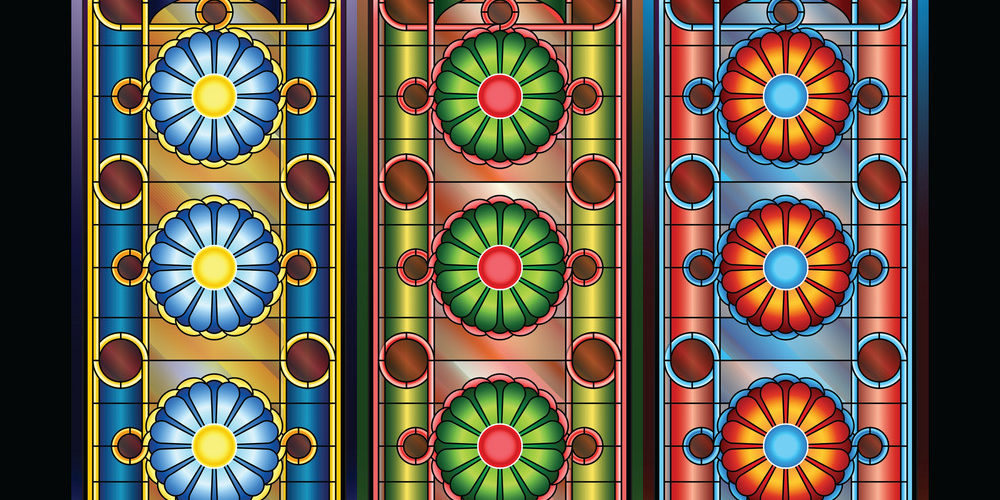Religion controlled daily life in medieval times. Cathederals were decorated elaborately to show love for their God. A form of art commonly called stained glass was designed. The windows were made of colored glass and the light filtered in many beautiful colors. The windows showed a relgious scene that told a story about Jesus, the Virgin Mary, and the saints of Christianity. Most people at that time period could not read. The use of stained glass windows did more than add beauty and light, it was an effecive way to teach people about religion.
A monk named Theophilus wrote in 1100 AD a “how to”, which descibed the construction and techniques of how to create stain glass windows. Stain glass suffered an artistic loss for 300 years during the Renaissance. The form became less artistic and more garnished with the use of thick heavy paint . Gothic art was resurrected in England in the mid 1800′s and historians rediscovered the art of stain glass techniques.
Stained glass panels can add style to any room in a home and can be placed anywhere a window pane mounts. Creating a stained glass window takes expertise and a lot of persistance. It does provide a combination of beauty and function. If you would like to add a stained glass window to your home but can’t afford to have it done professionally, you may consider doing it yourself. The shape of a stained glass window is a starting point. Several shapes to choose from, depending on the style of a room, can be round, oval, and rectangular. You may want to design your stained glass windows to compliment the decor of your room.
Stained glass comes in four major styles: cathedral, opalesent, wispy and streaked; and different methods, machine made, antique and semi-antique. Transparent glass also known as cathederal glass is the clear, tinted glass found in cathederals and churches. It’s available in asssorted colors and textures. Opalescent has a milky appearance and lets in less light than cathederal glass. This glass can be a single color or a swirled combination of two or more colors. Stirring together two types of glass such as cathedral and opalescent will create wispy glass. The ribboned glass has a swirled depth and luminicity. Streaked glass is similiar to wispy glass and is made by mixing two colors of opalescent glass. The results is translucent glass, with subtle color change and extra visual dimension.
Louis C.Tiffany travleled to Europe in 1865. He visited the Victoria and Albert museum whose collection of Roman and Syrian glass made an impression on him. Tiffany admired the coloration of the medievil glass and was convinced that the quality of contemporary glass could be impoved. In 1878 Tiffany’s interest turned toward the creation of stained glass, he opened his own studio and glass foundry because he was unable to find the types of glass that he desired in his interior designs. Tiffany was an inventor and designer of windows and the producer of materials which to create them and become renowned. He developed a type of glass called Favril which transmits textures and rich colors.
The most obvious property of glass is color, it almost always defines its desirability. Glass makers through accident and experimentation learned that by adding certain substances to the glass melt would produce spectacular colors in the finished product. When adding other substances to the melt it was discovered that it would remove color from the finished product. Metals substances such as cadmium sulfide, gold chloride, cobalt oxide will produce yellow, red, and blue-violet respectively. There are multiple other metal substances for other colors.
The sources of the oxides, sulfides and other metals compounds used to color glass are minerals. The keys to beauty often come right from the Earth. Through these stained glass panels sunlight creates windows into luminious works of art.
Related Posts



